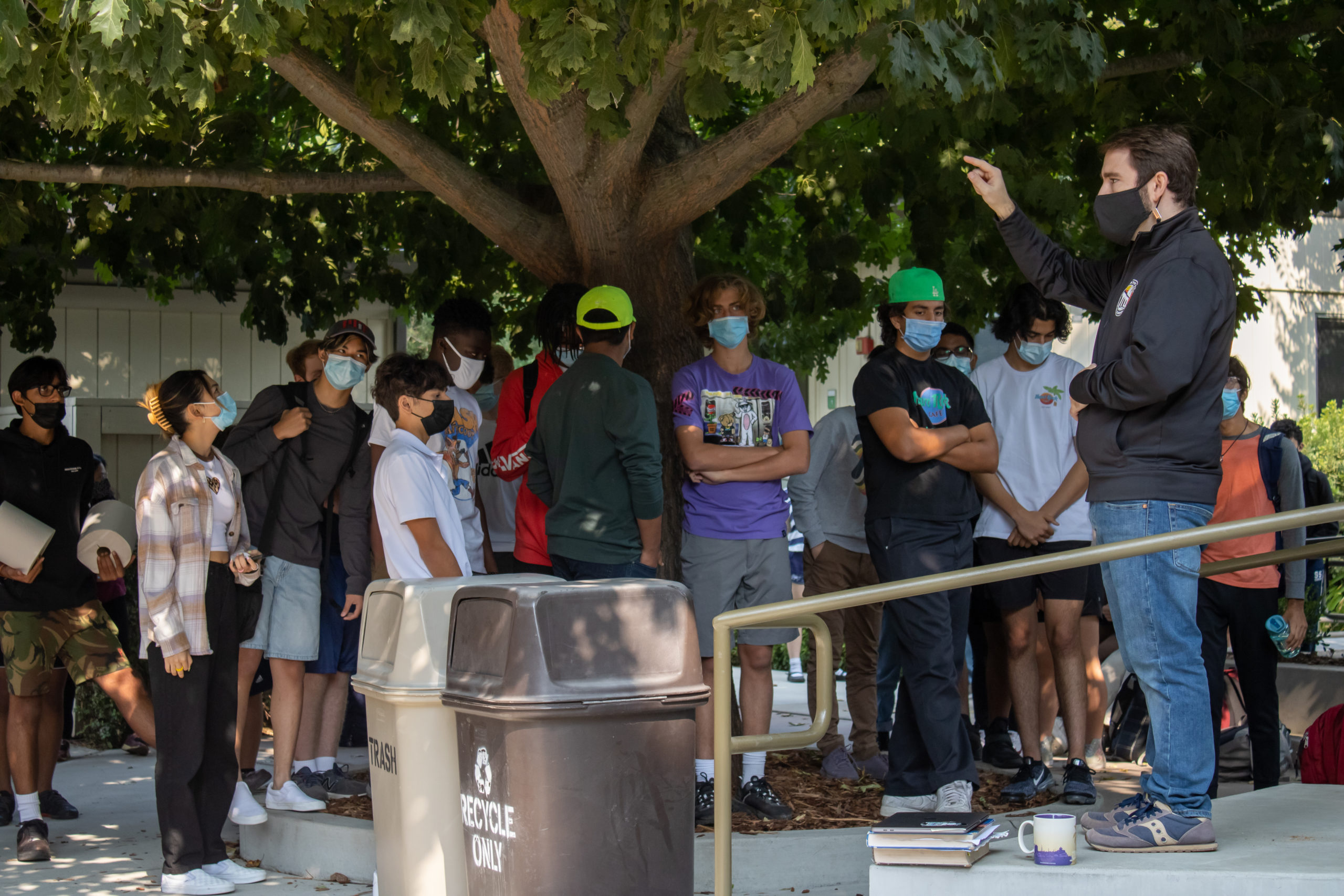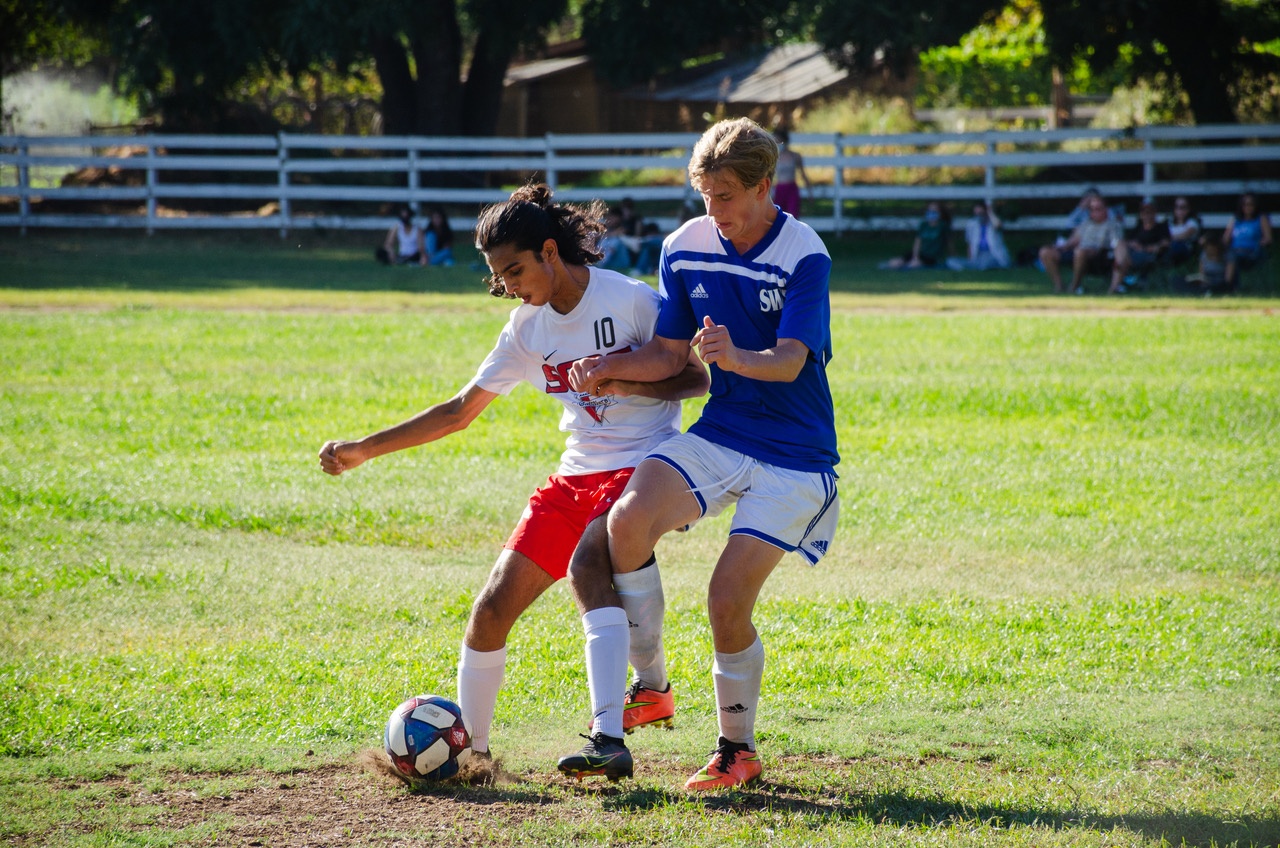After a year and a half of online learning, SCDS kicked off the 2021-22 school year with the goal to stay in person.
In order to safely do so, the school released a new set of COVID-19 guidelines. While most of the protocols are similar to last year, the school made changes based on the release of vaccines.
Vaccines are recommended but not required for all eligible students and employees. Everyone older than 12 is required to either submit proof of vaccination or a declaration of lack of vaccination.
“It’s possible that in the future we may require vaccines for all eligible students like many other school districts,” Wells said. “At the moment, 100% of eligible high school employees are vaccinated, and we’re still collecting data on students.”
Wells added that if the high school can get up to a high vaccination rate, school events, dances and field trips can become real discussion points.
The school is continuing bi-weekly testing for students and employees regardless of vaccination status. This policy will be reexamined once there’s more testing data, according to the SCDS “COVID-19 Policies and Procedures.”
The test data from the tests on Sept. 10-11 showed no positives tests. However, since then two students (siblings) have tested positive for COVID-19, according to a Friday email dated Sept. 17.
Currently, school-wide events such as pep rallies aren’t allowed, but individual division events such as morning meetings are.
One of the biggest changes, Wells said, is the reduction of social distancing from 6 feet of social distancing to 3 feet.
“Another big change is that we’re no longer taking temperatures at the curb,” Wells said. “We’re having parents screen at home and fill out the pickup patrol questions just like last year.”
The questions screen for COVID-19 symptoms such as fever, cough, sore throat, headache, diarrhea and also for exposure to COVID-19.
Additionally, the school is no longer divided into cohorts. Last year, students attended school in two cohorts to limit the number of students on campus. This year, the school has gone back to having all students on campus at once.
“We are no longer supporting remote students in the sense that there’s a remote cohort,” Wells said. “If a student is sick or absent, they need to communicate with their teacher to make up their work just like in the past. Some teachers may choose to Zoom with students at home if it’s easier, but that’s up to them.”
The school will remain open for in-person learning as long as the positivity for on-campus members remains under two percent schoolwide.
The school is also no longer using the hybrid schedule. High school students are following the rotating schedule which was introduced during the 2019-20 school year. The schedule has five 52-minute classes a day, three-minute passing periods, a 40-minute lunch period and a 35-minute flex period.
There is also a limit on the number of students per classroom and indoor meetings. Most of the classrooms will seat 12-13 students with desks three feet apart. “Because of the increase in students, plus the limited number of students per class, there are more class periods this year,” Wells said.
There are three sections of freshman history and two sections of freshman English. They will likely need to add a third section of freshman English in upcoming years and will ultimately need to hire another teacher to help cover the sections, Wells said.
Because of the increase in sections, teachers who only teach a couple of periods need to move between different classrooms, said high school English teacher Jane Bauman.
“When a teacher only has two or three classes, we don’t have enough real estate to give that teacher a dedicated classroom,” Bauman said. “I teach period 1 in Room 5, period 2 in Room 8 and period 3 in Room 6.”
Along with Bauman, director of technology Mike Unti, and Wells both teach in multiple classrooms.
Bauman noted that Unti, Wells, and she all have an office with a desk, so they don’t need a desk in a classroom.
“The teachers moving through different classrooms doesn’t impact our COVID-19 tracing as long as we have seating charts for each class,” Wells said.
Seating charts are kept for each class and elective in case a student or employee tests positive for COVID-19. If that happens, the school will use the Sacramento County Public Health’s “COVID-19 Symptom and Quarantine Decision Forest for K-12 Schools.”
Classrooms are disinfected at least once a day, after school, if not more often. Unlike last year, students and teachers are no longer required to wipe down their desks after classes.
“The most important thing during classes is that the ventilation remains on and everyone has their masks on at all times,” Wells said.
Students and employees are not allowed to eat while indoors. When eating outside, everyone should be socially distanced. For example, there should only be one person on each bench of the lunch tables when eating. Non-individually packed foods may be distributed. Unlike last year, microwaves are available for use but should be wiped down after each use.
“If you’re outside and not eating, then social distancing isn’t as significant, especially if you’re vaccinated,” Wells said.
Many of these policies may be reexamined once the school has more testing and vaccination data.
“A very high vaccination rate could open the door to a lot of opportunities,” Wells said. “With the delta variant going around, it’s better to be safe than sorry.”
—By Arikta Trivedi
Originally published in the Sept 21 edition of the Octagon.


